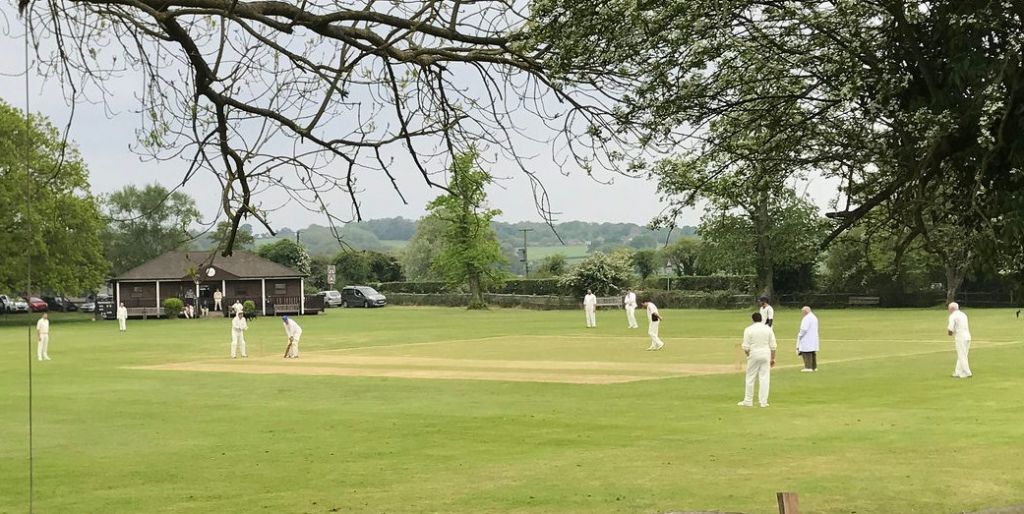Cricket in Newenden

The news from Australia isn't brilliant this morning - but hey, Ashes come and Ashes go. Here in Newenden we have a longer association with cricket than anybody else, and it will survive the occasional Antipodean disappointment. The picture above (taken by NCC's own Alex Balfour) shows Newenden's ancient cricket ground (with the Bourne facilities behind the cricket pavilion, and beautifully maintained by our own Peter B). But did you know quite how ancient?
Many places lay claim to being the place where cricket was first played. But Newenden has a very special claim, recognised by no less an authority than the Wisden Cricketer’s Almanack.
In March 1301, the King of England, Edward I, spent some time in Newenden. It appears from records of his correspondence that he stayed in the village on several dates in the early 14th century, possibly visiting old friends while on the way to inspect the progress of New Winchelsea. Newenden was then an important market and road stagepost, which perhaps explains why tradition tells of there being sixteen inns in the village. On this particular occasion, the King was accompanied by his eldest surviving son, known as Edward, Prince of Wales, who was later to ascend to the throne as Edward II.
The Royal household expended some money, noted in the King’s Wardrobe accounts, which is the term used for general domestic expenditure, for Prince Edward to play a game of creag at Newenden, on 10 March. If we accept, with Wisden, that creag is an early form of the word “cricket”, then this is indeed the very first time the game is mentioned in recorded history. No further written mention of the game has been found until at least 250 years later, which is taken by critics as a reason to discount Newenden’s claim. Nonetheless, although cricket may not have become a widely spread pastime for adults until the 17th century, historians generally agree that the game did originate in the Weald, and that it was played by children for centuries before it was formalised and entered history in anything like its modern form.
Some say that creag is just a variant of the Gaelic word craic, meaning fun in general. But they would have to explain why Saxon peasants and their Norman overlords were still using Celtic words over 700 years after the old Britons had been chased out of Kent. Finally, while 10 March may seem impossibly early for cricket, it should be noted first that this date is according to the Julian calendar, which by this time was seriously out of synch with the solar year. So in our calendar, this date corresponds to 18 March. Also, the climate of the 13th century had been particularly clement, even if it was now deteriorating into the “Little Ice Age”. For instance, the great storm of 1287, which finally claimed Old Winchelsea, thus necessitating Edward’s visits to our corner of England, may have been a sign of rapid climate change. However, in 1301, March could still have been significantly milder than the springs we experience now.
So, never mind those that find fault with our history. It is quite possible that Prince Edward, then almost 17 years old, really did play cricket on a sunny field below the then brand new church of St. Peter’s. A royal start for cricket, with village boys and others from his retinue (including his recent, later infamous new friend Piers Gaveston) that spring day some 700 years ago? Certainly, we in Newenden like to think so!
